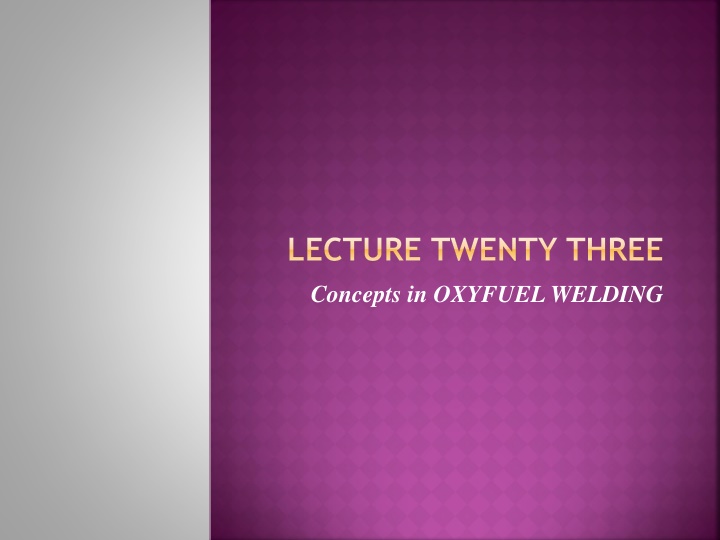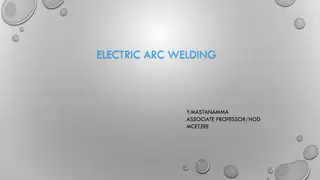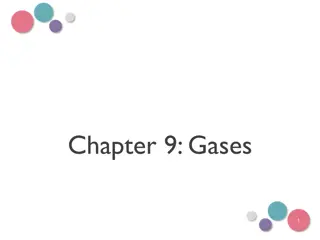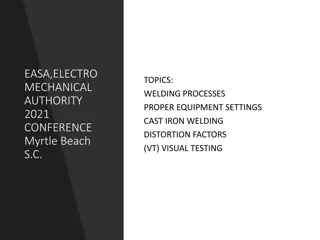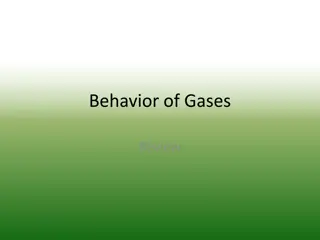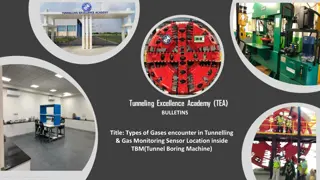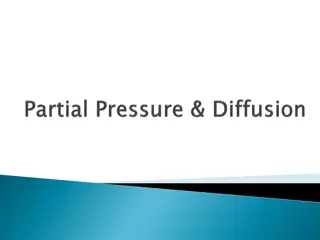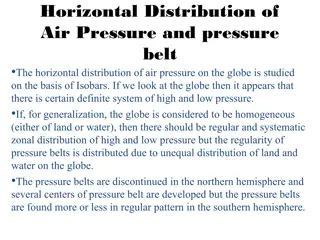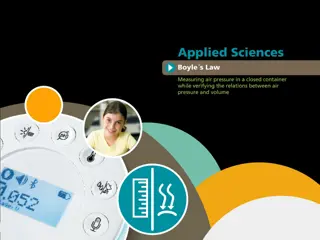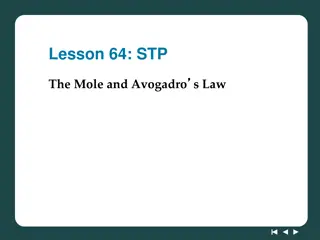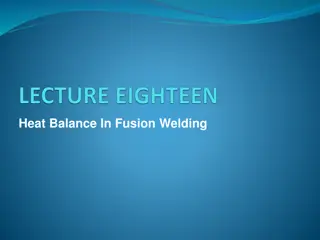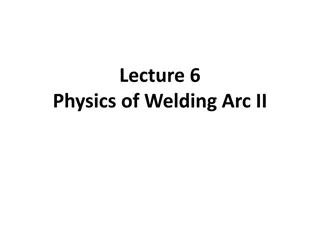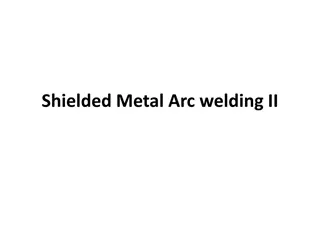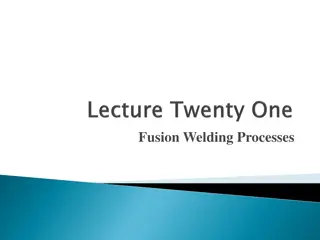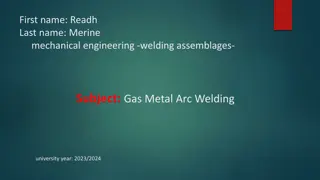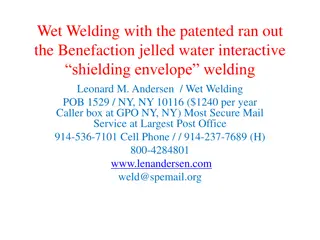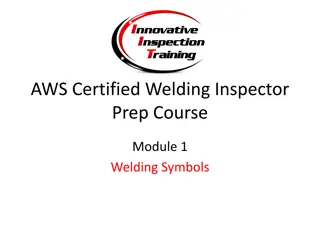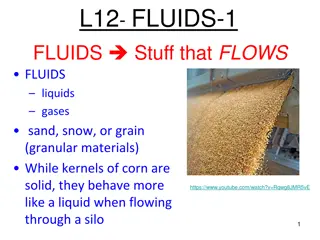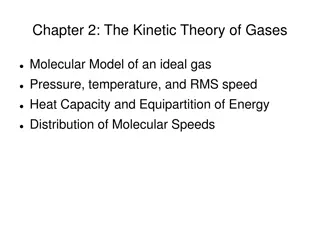Overview of Alternative Gases and Pressure Gas Welding in Oxyfuel Welding
Alternative gases to acetylene in oxyfuel welding, such as MAPP, propane, and natural gas, offer different characteristics and applications. Pressure gas welding (PGW) is a fusion-welding process that uses oxyacetylene gas and pressure to join metal parts without filler metal. The advantages, limitations, and safety considerations of these alternative gases and PGW in the oxyfuel welding process are discussed.
Download Presentation

Please find below an Image/Link to download the presentation.
The content on the website is provided AS IS for your information and personal use only. It may not be sold, licensed, or shared on other websites without obtaining consent from the author.If you encounter any issues during the download, it is possible that the publisher has removed the file from their server.
You are allowed to download the files provided on this website for personal or commercial use, subject to the condition that they are used lawfully. All files are the property of their respective owners.
The content on the website is provided AS IS for your information and personal use only. It may not be sold, licensed, or shared on other websites without obtaining consent from the author.
E N D
Presentation Transcript
LECTURE TWENTY THREE Concepts in OXYFUEL WELDING
ALTERNATIVE GASES FOR OXYFUEL WELDING Several members of the OFW group are based on gases other than acetylene. Most of the alternative fuels are listed in Table 23.1, together with their burning temperatures and combustion heats. For comparison, acetylene is included in the list. Although oxyacetylene is the most common OFW fuel, each of the other gases can be used in certain applications typically limited to welding of sheet metal and metals with low melting
Temperatures. In addition, some users prefer these alternative gases for safety reasons. The fuel that competes most closely with acetylene in burning temperature and heating value is methylacetylene-propadiene. It is a fuel developed by the Dow Chemical Company sold under the trade name MAPP. MAPP (C3H4) has heating characteristics similar to acetylene and can be stored under pressure as a liquid, thus avoiding the special storage problems associated with C2H2. When hydrogen is burned with oxygen as the fuel, the process is called oxyhydrogen welding (OHW).
As shown in Table 23.1, the welding temperature in OHW is below that possible in oxyacetylene welding. In addition, the color of the flame is not affected by differences in the mixture of hydrogen and oxygen, and therefore it is more difficult for the welder to adjust the torch. Other fuels used in OFW include propane and natural gas. Propane (C3H8) is more closely associated with brazing, soldering, and cutting operations than with welding. Natural gas consists mostly of ethane (C2H6) and methane (CH4). When mixed with oxygen it achieves a high temperature flame and is becoming more common in small welding shops.
PRESSURE GAS WELDING This is a special OFW process, distinguished by type of application rather than fuel gas. Pressure gas welding (PGW) is a fusion-welding process in which coalescence is obtained over the entire contact surfaces of the two parts by heating them with an appropriate fuel mixture (usually oxyacetylene gas) and then applying pressure to bond the surfaces. A typical application is illustrated in Figure 23.1. Parts are heated until melting begins on the surfaces. The heating torch is then withdrawn, and the parts are pressed together and held at high pressure while solidification occurs. No filler metal is used in PGW.
FILLER METALS Filler metals are used to supply additional metal to the weld zone during welding. They are available as filler rods or wire , and may be bare or coated with flux. The purpose of the flux is to retard oxidation of the surfaces of the parts being welded by generating a gaseous shield around the weld zone. The flux also helps to dissolve and remove oxides and other substances from the weld zone, thus contributing to the formation of a stronger joint. The slag developed (compounds of oxides, fluxes, and electrode-coating materials) protects the molten puddle of metal against oxidation as it cools.
